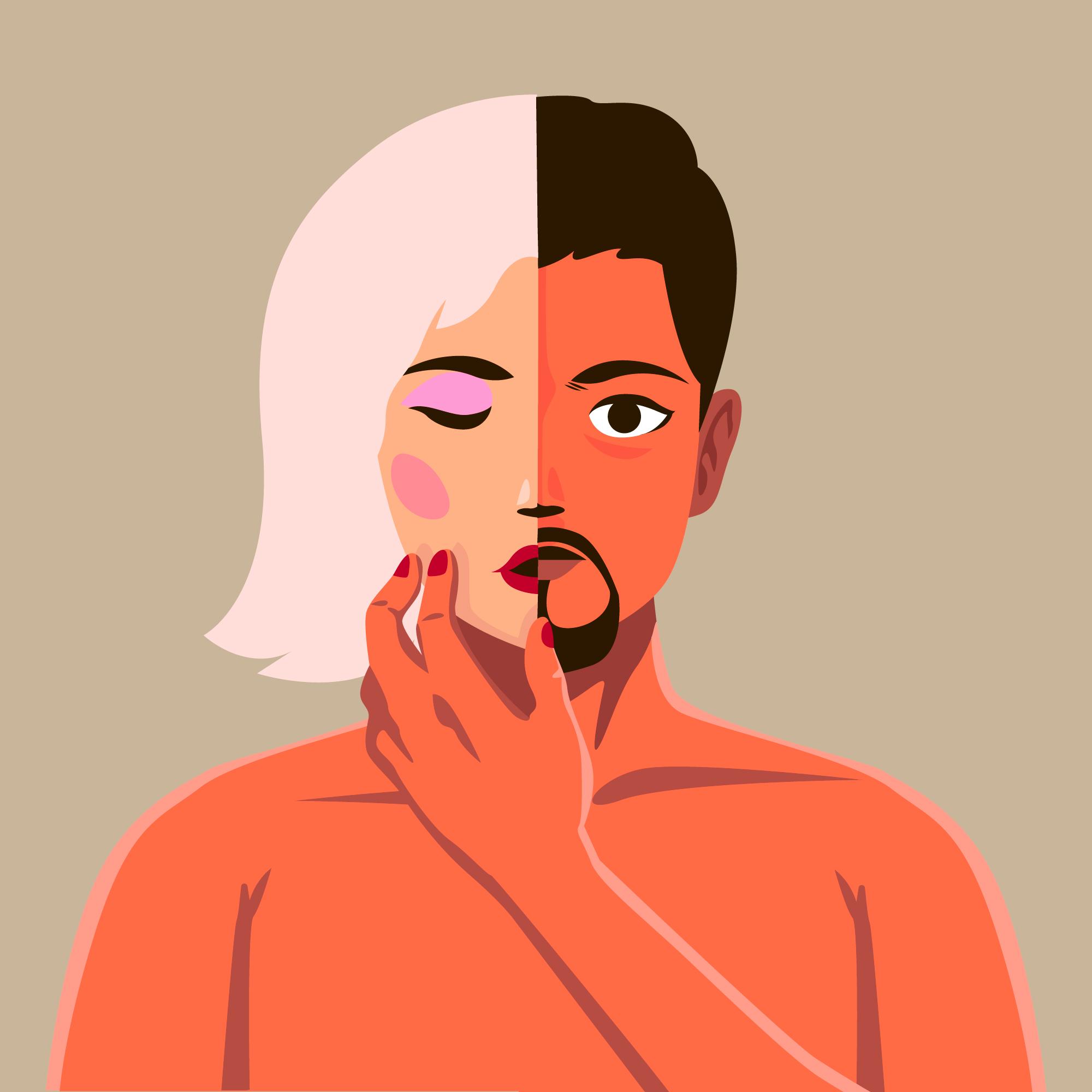
Male Gaze
Objectives:
Students will explore the concept of the male gaze and reflect on how this view shapes the representation of women in art and visual media. They analyze examples in order to understand and critically question the social implications.
Content and methodology:
The worksheet conveys the origins of the male gaze using a media form such as classical painting and shows how this concept continues to have an impact today. Learners examine the characteristics of male gaze and apply their knowledge in analysis tasks. With the help of examples and reflection questions, they critically examine gender roles and media representation.
Competencies:
- Analysis and interpretation of visual media and works of art
- Critical reflection on social norms and gender roles
- Consciously recognizing and questioning media perspectives
Target group and level: From grade 10
54 other teachers use this template
Target group and level
From grade 10
Subjects
Male Gaze


Introduction
In this worksheet you will learn what the Male Gaze is and how it influences our society.
📝 Have you ever heard of the Male Gaze? Think about what this term could mean and write down your thoughts.

The Male Gaze: How the media shows the world from a male perspective
Have you ever noticed that women are often portrayed very differently to men in films, series or advertising? This is often due to the so-called male gaze. This term was coined by film scholar Laura Mulvey in 1975. It describes how women in visual media are often not shown as independent characters with their own plot, but rather as pretty objects - in other words, as something to be looked at.
This is because many films and works of art are told from a male-dominated point of view. Men are usually shown as active heroes who act and make decisions, while women tend to take on a passive role and are often staged through their bodies. This can be seen, for example, in camera angles that emphasize certain parts of the body or portray women in such a way that they appear more decorative than driving the action.
This pattern is not new - it has existed in art and culture for centuries. It has shaped our visual behavior, often without us consciously noticing it. But if we look at it and question it, we can discover new, more diverse ways of telling stories. The more people become aware of how women and men are portrayed differently, the sooner things can change - towards stories in which everyone can act on an equal footing.
The Male Gaze in Classical Painting
In the realm of classical painting, the concept of the Male Gaze is profoundly evident, shaping the representation of women from the Renaissance through to the Romantic era. This term, coined by feminist film theorist Laura Mulvey, refers to the depiction of women from a masculine, heterosexual perspective, presenting them as objects of male pleasure. This gaze has deep roots in classical painting, where it has influenced the portrayal of women and the intentions behind these artworks.
The Renaissance period marked a significant shift in the portrayal of women in art. Artists like Sandro Botticelli and Titian crafted images of women that were both idealized and eroticized, catering to the tastes and desires of their male patrons. Botticelli's "Primavera" and "The Birth of Venus," for instance, depict women in various states of undress, embodying an ideal of beauty that is both passive and alluring. These works were typically commissioned by wealthy and influential men, such as members of the Medici family, who used these paintings to showcase their cultural sophistication and reinforce their social status.
In these paintings, women are often portrayed in static, passive poses, exuding an aura of availability and submissiveness. Venus, the goddess of love, frequently serves as a central figure, symbolizing both divine beauty and earthly desire. The settings of these paintings, filled with lush landscapes and mythological elements, further enhance the fantastical and idealized nature of the female subjects. The women in these artworks are not depicted as individuals with agency but as embodiments of male fantasies, their bodies meticulously crafted to please the male eye.
The function of these images extended beyond mere decoration; they were tools of social and cultural reinforcement. By commissioning and displaying such artworks, male patrons asserted their dominance and control over both the artistic narrative and the women within it. The portrayal of women as objects of beauty and desire served to perpetuate societal norms that valued women primarily for their physical appearance and their ability to fulfill male desires.
This tradition continued into the 19th century with artists like Édouard Manet and John William Waterhouse. Manet's "Olympia," for example, caused a scandal with its provocative depiction of a nude woman who boldly meets the viewer's gaze, challenging the passive representation of women seen in earlier works. Meanwhile, Waterhouse's "Hylas and the Nymphs" presents nymphs as alluring and dangerous, reinforcing the trope of the femme fatale.
The influence of the Male Gaze in classical painting persists in modern art, where the objectification of women remains a subject of critical discussion. Feminist artists and critics continuously challenge these traditional representations, striving to create and promote images that celebrate women's agency and subjectivity. By examining the historical context and impact of the Male Gaze in classical painting, we gain valuable insights into the enduring power dynamics that have shaped the representation of women in art and culture.
📌 Here you will find information to help you recognize the characteristics of the Male Gaze. Use it for the next task.
Idealized Beauty
Women are depicted with perfect, often exaggerated features that conform to male ideals of beauty.
Tip: Look for symmetrical faces, flawless skin, and ideal body proportions.
Passive Poses
Women are often shown in relaxed, submissive, or static poses that suggest passivity and availability.
Tip: Notice if the female subjects appear inactive or are positioned to be gazed upon.
Eroticization
Female figures are presented in a sensual or erotic manner, often with exposed skin or in suggestive poses.
Tip: Pay attention to the amount of nudity and the suggestive nature of the poses.
Mythological and Fantastical Settings
Women are placed in mythological or fantastical environments that idealize and distance them from reality.
Tip: Check if the background includes mythological references or surreal landscapes.
Male Patronage
Artworks were often commissioned by wealthy men, reflecting their tastes and societal status.
Tip: Research the patron of the artwork to understand the influence behind the representation.
The Female Gaze in Classical Painting
The term Female Gaze refers to the way women perceive the world and represent themselves. In contrast to the Male Gaze, which presents women as objects of male desire, the Female Gaze emphasizes women's subjective experiences, thoughts, and inner worlds. Instead of reducing women to their appearance or sexuality, it highlights their complexity. Women can represent themselves and tell their stories without male expectations or stereotypes.
In classical painting, the Female Gaze manifests by depicting women not just in passive, idealized poses, but as active subjects with their own thoughts and emotions. Female artists and those who adopt this perspective could emphasize the authenticity and diversity of women's experiences, rather than focusing on external beauty standards or sexual appeal.
For instance, the portrayal of women in meaningful, everyday moments instead of scenes that cater to male fantasies would exemplify the Female Gaze. Women's bodies could be shown in their natural form, free from the pressure of conforming to specific beauty ideals. The emphasis would be on their personality and experiences rather than an idealized representation of femininity.
Additionally, women of various ages and life stages could be given more prominence in art—not just as young, attractive figures, but as evolving individuals with rich stories. The Female Gaze in classical painting would allow for a multifaceted portrayal of women as complex individuals. Their experiences and perspectives could reflect the diversity of human emotions and relationships, making the art world more realistic and inclusive.
